Review: LG Ally
May 19, 2010, 2:48 PM by Eric M. Zeman
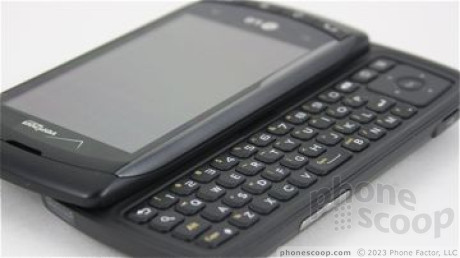
LG's first Android phone for the U.S. scores well on most counts, but misses the mark in a few places. It feels like a smartphone that has been stuffed into the shell of a feature phone. Does it fit?
Form
Is It Your Type?
LG has taken a slightly different approach with its first Android handset for the U.S. Rather than stuff it full of premium features and compete head-to-head against the high-end Droids, LG decided to mate Google's smartphone platform with the body of a feature phone. The result leaves the Ally hard to classify. It excels at ease-of-use when it comes to the Android operating system, but multimedia capabilities are a mixed bag at best.
Body
The Ally is weighty. It has a thick profile, and is by no means sexy. It looks like any another touch-based messaging phone from LG. In fact, it strongly resembles the LG enV Touch. Nothing sets it apart as an Android phone. The weight lends itself to a feel of quality, though. It didn't feel cheap or plasticky at all. The materials are colored matte black and feel as though they are coated in a soft-touch material. The solid construction showed no signs of weakness. You're going to know it when this phone is in your jeans pocket due to both size and weight.
On the front are four hardware keys at the bottom — send/end, and home/menu. Above these keys are two capacitive buttons similar to those found on the Droid Incredible or Motorola Droid for search and back. All the buttons had good travel and feedback, and even the capacitive buttons were responsive.
The top half of the Ally glides smoothly and snaps open with a satisfying "thunk." The spring assistance is just right, and it is easy to open and close with minimal pressure from a single finger.
The keyboard underneath is one of the biggest I've ever seen. It has four rows and each row stretches from end-to-end. It's massive. The individual keys feel fantastic under the thumb. Each key is sculpted similar to those found on the BlackBerry Bold 9700. They are easy to find, easy to use, and the keys have perfect travel and feedback. I am not a fan of huge sideways-slider keyboards, but this is one of the better ones that I have used. It's sheer size means BlackBerry users, for example, will need some time to adjust to it.
The volume toggle is on the left side of the Ally. It protrudes from the side of the phone just enough. Travel and feedback were good. The hatch covering the microUSB port is below it. The microSD slot is found on the right side under a hatch that peels off easily. The two-stage camera key is lodged into the standard camera key spot on the right side of the Ally. The two stages are poorly defined. The difference is so subtle, it will be easy to fire off a picture without giving the autofocus a chance to do its job.
There is a 3.5mm headset jack on the top of the phone, meaning it can be used with any standard pair of stereo headphones.
To my eyes, the hardware screams "feature phone" and not Android phone. But you may not care about that.
The Three S's
Screen
The Ally has a 3.2-inch display showing 480 x 800 pixels. The smaller size boosts the pixels-per-inch count and leads to sharper icons and graphics. Everything looks really good on the display. Even the smallest text is legible, and images on the screen are free of pixelation or jagged edges. For a phone this large, however, it should have a 3.5-inch display.
As for viewability, indoors is no problem. Outdoors wasn't great. It survived cloudy days, but bright sunshine obliterated it, making on-screen items unreadable. Despite the glare and smudge issues, colors look good.
Signal
Signal performance for the Ally was slightly below par when compared to most Verizon Wireless devices. The signal bar indicator placed signal strength consistently in the 3 or 4 bar range most of the time, but that didn't correlate at all with how well the phone performed. Despite holding onto 4 bars, the Ally was unable to make a call in the New Jersey vault (my local ShopRite, a known dead zone). And times when the Ally had zero bars of coverage it performed just fine. The Ally didn't seem to care what the signal indicator read, it did as it pleased. The lack of consistency was annoying. I missed several calls, and noticed plenty of slow data sessions to boot.
Sound
Phone calls that managed to connect sounded very good. I heard a few distortions every now and then, but the majority of calls were clear. Those I spoke to said that I sounded clear, as well. Earpiece volumes was sufficiently loud. In fact, I'd recommend you stay away from the maximum setting, as it's loud enough to hurt your eardrum. As for ring tones, you have to be careful. Many of the included ringtones have soft or quiet openings. Some of the ringtones are loud right away. The volume can be set loud enough that you won't miss calls, but that really depends on the ringtone.
Battery
The Ally's battery held up surprisingly well. I have low expectations for Android phones, but the Ally managed to squeeze through two days pretty consistently. That's much better than most of the competition, which gives out after a single day. Heavy users may still find that they'll need to charge each night, as extended browsing, GPS and Bluetooth usage can deflate battery life by half a day. I'd still bring a charger even for a short weekend trip.
Basics
Menus
The Ally runs a slightly modified version of Android 2.1. There are five customizable home screens, though only three have any content on them out of the box. The home screens can be loaded with apps, widgets, shortcuts, or other content. Home screens are reached by swiping to the left or right.
LG also offers its own custom theme for the Ally. The theme really only changes the appearance of the central home screen. It places four permanent shortcuts at the bottom of the screen (phone, contacts, messages, browser). It also changes the color of the main menu from black to white. Not the most earth shattering of differences.
The main menu is accessed by pressing the little software cube button at the bottom of the screen. This is where all the applications, widgets and anything you download from the Android Market wind up. If you download a lot, it starts to get intimidating. Thankfully, users can create folders and bundle their content to make this main menu easier to deal with.
The physical menu key placed at the bottom of the phone brings up a small menu box at the bottom of the screen for each application on the phone. The menu key is the easiest and best way to access the phone's settings and control menus. That's where all the nitty-gritty stuff is buried. One you're past the main menu itself, all the secondary menus retain the Android look of white text on a black background. No changes there. Android is such a young platform that it is still very easy to figure out and the underlying OS is nearly identical from phone to phone.
Each Android handset maker places the main Android keys (Home, Menu, Back, Search) in different places and in a different order. Once you learn where they are, they become essential to helping navigate the menus.
The keyboard includes 4-way directional keys, which help when editing text, but not necessarily when moving between the menus.
In all, there's nothing thrilling to report here.
Calls/Contacts
Calls
The Ally is one of the few Android devices that retains physical send/end keys. I find their presence very helpful in jumping to/from calls quickly. Press the send key to see a list of your recent calls.
From the call log, press any call record quickly and it will open up the list of recent calls to and from that number, along with links to send that person a text message or view the full contact details. If you press and hold a call record, a menu screen pops up with a list of options, which include calling the number, deleting the call log and so on. To the far right of a call log is a green phone symbol. Press that if you want to start a phone call right away.
Contacts
The Ally will import all your Google and Exchange contacts if you have them. Adding Facebook friends is optional. If you choose to do that, the contacts application is smart enough to add the Facebook profile photos to your existing contacts and merge them into one contact. So, if you're friends with Jimmy Jones on Facebook and he's also a Gmail contact, you'll see only one entry for Jimmy, not two.
The messaging shortcuts are awesome. In the contacts app, press the profile picture (or the little Android if there's no profile picture) and a little messaging menu pops up for that contact. If you have their phone number, it will show you the phone symbol to make a quick call, and you'll also have shortcuts to send them an SMS, email or go to their Facebook profile. Alternately, if you press the area next to the profile picture/Android, it will simply open the contact's page. Use the menu key to make changes or perform other actions.
Messaging
The Ally supports multiple Gmail and Exchange accounts, SMS, MMS, IM and social networking. In other words, if you want to reach out to someone, Ally offers pretty much any way to do so.
Supporting multiple Gmail and Exchange accounts is something that will most likely only be used by business users, but it is a welcome feature of the platform. Not only does it sync emails right away, but contacts and calendar information as well.
The unified inbox means all your email accounts are lumped into one giant inbox. You can choose to employ different colored labels for your different email accounts, and this helps you sort them out visually in your inbox. This unified inbox supports both Exchange and POP/IMAP. Gmail works in the unified inbox, too, though it is restricted to IMAP and doesn't offer all the features that the separate Gmail application offers.
SMS and MMS conversations are threaded. From the message composition screen, pressing the menu key lets you insert smileys, manage threads and attach files.
Google Talk is supported out the box and works very well with Gmail contacts. If you want AIM, Windows Live or Yahoo IM, you're going to have to search the Android Market for them.
The Ally comes pre-loaded with Facebook, MySpace and Twitter apps. For each, simply enter in your username and password and you're good to go. The Twitter app is the new, official Twitter app from Twitter. I've used this application sparingly. While it covers the basics and looks pretty doing it, I find both Seesmic and Twitroid to be more useful.
The Ally also has a new app called Socialite. Socialite ties together the status updates from Twitter and Facebook into one console. If you want to see what your friends are all up to, but don't necessarily want to open both Facebook and Twitter, socialite condenses everything into one app where users can see and post updates. It's not as elegant or refined as HTC's Friend Stream or Motorola's Motoblur, but it cuts down on the number of open apps if you care about that sort of thing. In my experience, I found it to be extremely slow and not as rich as the individual Facebook and Twitter apps.
Extras
Music
Sadly, the Ally's music application is identical to that of most every other Android phone going all the way back to the T-Mobile G1. It works, but it doesn't offer much in the way of thrills. It's not too much of a pain to sort through your library and create playlists, but functionality is minimal and extras are non-existent.
As for loading music, it is easy enough to drag and drop your playlists to the media card via USB storage mode, but I am getting tired of this method. I update my library frequently, and scouring the contents of a microSD card to see what's on it is a pain in the rear. To that end, I've begun using DoubleTwist to manage iTunes integration with Android handsets. It's available as a free download on the Web.
Users can also choose to check out the Amazon MP3 store for purchasing tracks directly from the handset.
Despite the lack of a feature-rich music player, music playback does sound good through both the 3.5mm headset jack and via stereo Bluetooth speakers.
Camera
Camera
The Ally's camera is surprisingly new and different compared to other Android devices. It behaves more like the camera would on a Verizon Wireless feature phone. The main shutter control is on the far right side of the screen, as are software buttons for switching between video/camera mode, and jumping into the photo gallery. A quick press of the screen calls up two different sets of camera tools.
The first runs across the top of the screen, and shows you what resolution the camera is set for, what metering mode it is set to, and how much battery power is left. On the left side of the screen is a vertical set of icons that let you adjust zoom, brightness, the flash, toggle macro on/off, or dive into the full settings menu.
The settings menu is extensive, and permits for rather finite control of the camera and its properties. White balance, image quality, ISO, scene mode, color effects and so on can be adjusted, as can resolution (3M, 2M, 1M, VGA, QVGA). This is where the positives end, I am afraid.
The Ally is dreadfully slow to focus. It takes a full 3 seconds to focus images before it is ready to take the picture. Once the image is in focus, you press the two-stage button down all the way to snap the picture. There's about a 1.5 second pause between the time you press the shutter release and the time the Ally actually captures the image. The slow focusing and slow shooting process together mean you're not going to be able to fire off quick shots of the kids or any sports action. Need to take a shot of a static landscape? Go for it. Need to catch the kids scoring a soccer goal? Good luck.
The video camera software is identical to that of the still camera.
Gallery
The Ally's photo gallery is the stock Android 2.1 photo gallery. It's the same as the gallery on the Nexus One or Motorola Droid. It bunches photos in a timeline, and users swipe left or right to move through the timeline. It attaches time stamps so you can look through your gallery based on dates. That is very helpful if you need to find a specific picture and happen to know when you took it.
Images can be shared, deleted, and manipulated in only the most rudimentary fashion. Editing features are limited to cropping, and rotating left or right. That's it. No other editing features are available. As with all Android handsets, it is a snap to send images to others via MMS, SMS, and so on.
Photos
Photos
The Ally has a 3 megapixel camera, and honestly I wasn't expecting much from it. To my surprise, the Ally produces stunningly good photos for a 3 megapixel shooter. Focus was crystal clear in most shots I captured. Having such sharp focus really made images pop. There was very little grain or noise, even in images produced indoors. Shockingly, images captured indoors were still colorful. Typical indoor shots are muted and grainy; not so with the Ally, even without the flash! Color me impressed.
At only 3 megapixels, you're not going to be blowing up these images to 16 x 20 and framing them in your living room, but they will easily be worth sharing via Facebook, MySpace and other photo services.
Video
Image clarity in the video I shot with the Ally was excellent, definitely on par with the images I captured. I noticed few problems (such as ghosting or warped images when panning), and the color was very accurate. The one problem I noticed was a discrepancy between the image and sound. On several of the videos I recorded, there was a slight delay with the sound. Otherwise it worked out very well.
(video no longer available)
Browse/Customize
Browser
The browsing experience on the Ally is really no different from any other Android phone. The browser software is the same, and other than the substitution of Verizon Wireless' home page, you might not be able to tell it apart from the Incredible or Droid.
You can use your finger to navigate around web pages directly on the screen or use the directional buttons on the keyboard. There is a full list of settings that let you customize how the browser operates (such as enabling / disabling JavaScript, managing passwords and privacy).
I found browsing speeds to be inconsistent. Sometimes sites loaded instantly, but the Ally's browser often would crash and hang while loading a page. This could be related to the Ally's signal performance issues rather than the browser itself.
Customize
Because the Ally runs Android, there are a lot of ways for users to adjust the way the phone behaves. Ringtones, wallpapers, screensavers and all the simple stuff is old hat; it can all be managed. The settings menu is becoming more complex with each successive release of Android. Users have full control over the radios, connections, syncing, the SD card, accounts, and so on.
I don't know about you, but the white on black menu scheme of Android handsets is getting a bit boring. I wish there were a more extensive color palette tho choose from. Perhaps when Android 3.0 rolls around...
Extras
Apps
The Ally can access the Android Market. In the Android Market, there is a tab of "Verizon approved" apps, such as VZW Tones, My Verizon, Visual Voice Mail, V CAST Media Manager and a handful of others. Oddly, none of Verizon's stock apps are pre-loaded.
Bluetooth
The Ally supports both mono and stereo Bluetooth headsets. I had no trouble pairing with either type. Phone calls through a mono headset were acceptable, but noisier than I cared for. It wasn't the worst Bluetooth experience, but far from the best. Music sounded good through stereo Bluetooth headphones, though the sound did cut out every now and then.
Clock
Most Android devices include a good clock application and the Ally is no different. Press any key when the phone is asleep, and the unlock screen displays the time in a large digital read-out. It is easily read from an arm's length away.
GPS
Verizon's VZ Navigator software is not present on the Ally. Instead, you have to rely on Google Maps or a third-party application from the Android Market. Because the Ally runs Android 2.1, it supports the free navigation version of Google Maps. I find it works quite well, and have come to rely on it to get me from here to there.
Wrap-Up
LG has done a pretty decent job with its first Android handset for the U.S., though it could certainly use some improvements. The Ally is large, weighty, and should have a slightly bigger screen given the sheer volume it consumes. The solid construction, good keyboard, and nice hand feel make up for the size...a little bit.
The stock Android 2.1 user interface is snappy and presents no challenges to the user. I like that the Ally has five home screens to customize with content.
The media powers are mixed. The music experience is bare-bones all the way, with only the most rudimentary playback features enabled. The camera has great, advanced controls, but suffers from a bit of performance lag. It makes up for the performance lag, however, by taking really good pictures.
The browser breaks no new ground, and the extra features are few and far between.
In sum, the Ally is a solid phone, but not an exceptional one. There are tons of other tempting choices on Verizon's shelves. The Droid and Incredible offer better overall experiences, but have their own drawbacks. If the form factor of the Ally appeals to you, and you don't care about some of the media weaknesses, then perhaps the Ally is what you need.
Comments
If you're going to pay $30 bucks
(continues)


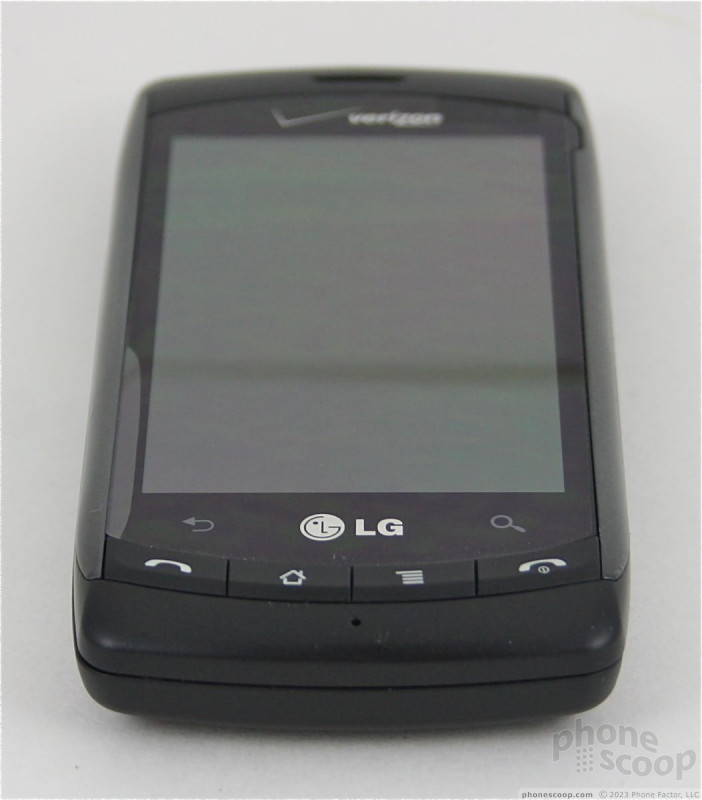
































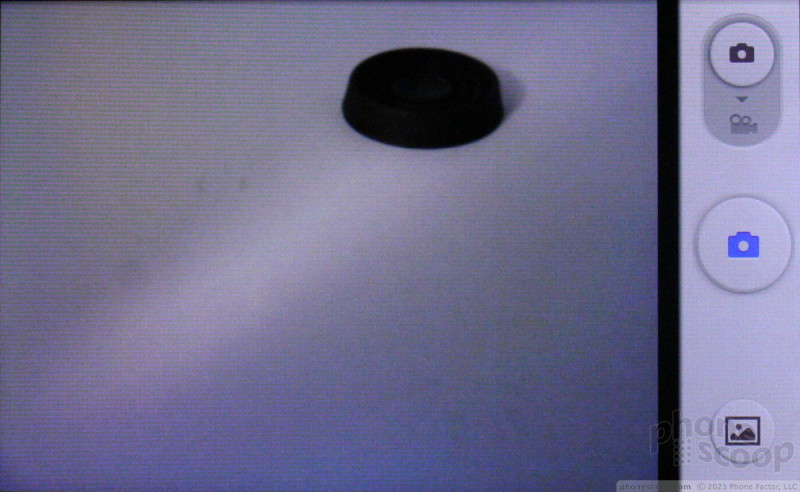




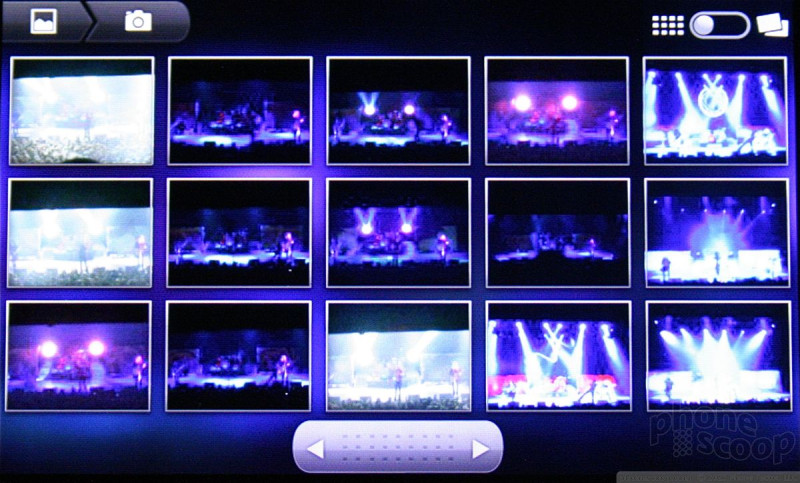



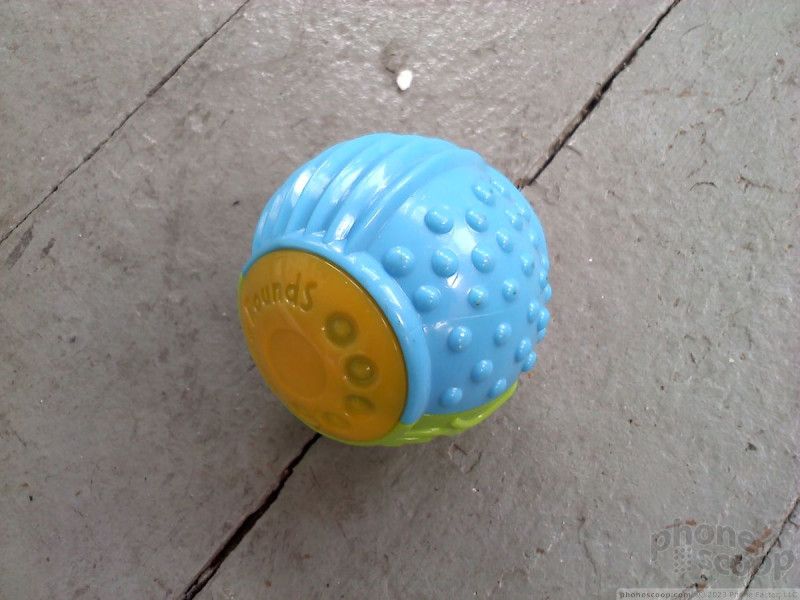















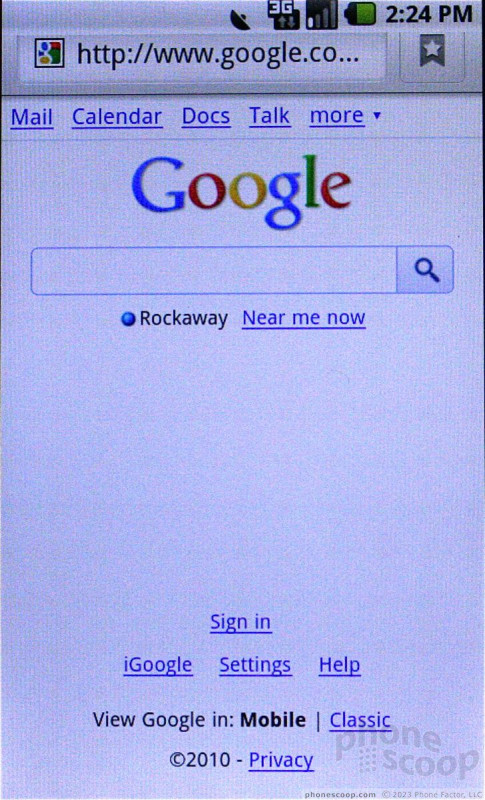



 Hands On: LG Ally Android Phone
Hands On: LG Ally Android Phone
 Samsung Refreshes Galaxy S Series with S Pen, New Cameras
Samsung Refreshes Galaxy S Series with S Pen, New Cameras
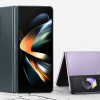 Samsung Refines its Foldable Phones
Samsung Refines its Foldable Phones
 iPhone 14 Plus Offers a Big Screen For Less
iPhone 14 Plus Offers a Big Screen For Less
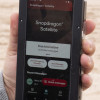 Qualcomm Taps Iridium for Satellite Connectivity
Qualcomm Taps Iridium for Satellite Connectivity
 LG Ally / Apex / Axis
LG Ally / Apex / Axis


